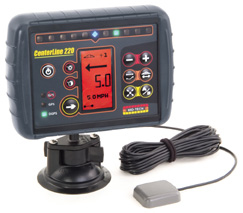
News
The widest brings efficiency
The new 80 foot Seed Master drill was designed and built for a Saskatchewan farm family that decided it made more sense to seed their crops with one extra wide seeding unit rather than the two 54 foot seeders the have pulled in the past.
November 20, 2007 By Top Crop Manager
The new 80 foot Seed Master drill was designed and built for a Saskatchewan farm family that decided it made more sense to seed their crops with one extra wide seeding unit rather than the two 54 foot seeders the have pulled in the past.
“We thought if we could eliminate some iron in the field, we would save on equipment costs and burn less fuel,” explains Alfred Bechard, who operates Be-ver Farms, a 10,000 acre grain farm near Sedley, Saskatchewan, with his son Ron, his son-in-law Joel Cavers and his grandson, Ben Cavers.
Bechard says they can now operate with one less tractor and seeding unit in the field, Be-ver Farms is saving about $1.00 per acre over its 10,000 acres, plus crops were seeding in 17 days with the 80 foot drill: just one day longer than it took to do the same job with two smaller drills the year before.
Be-ver Farms pulled the 80 foot Seed Master with one of the same 450 horsepower tractors that pulled the 54 foot drills. Bechard estimates he only fuelled up every 16 hours compared to every 12 hours with the smaller seed drills last spring. He says the Seed Master's seed depth control is the reason it is so light pulling. Its dual knife openers attach to separate shanks with packer wheels on the end that follow the ground independently of the frame, setting the seed depth for each row.
“One of the challenges of building wider drills is the need to reinforce the structural strength of the wings,” says Norbert Beaujot of Straw Track Manufacturing. As they pull through the field, the drag on the openers flexes the wings back which can cause metal fatigue. Beaujot solved that problem by designing an active wing brace for the 80 foot Seed Master. Instead of using a fixed piece of steel which would eventually break at the weld points where it attaches to the frame, Beaujot created a moving brace. It consists of hydraulic cylinders attached to the end of steel cables on each wing. The active brace pulls the wings forward to match the backward pull of the openers as they drag through the soil.